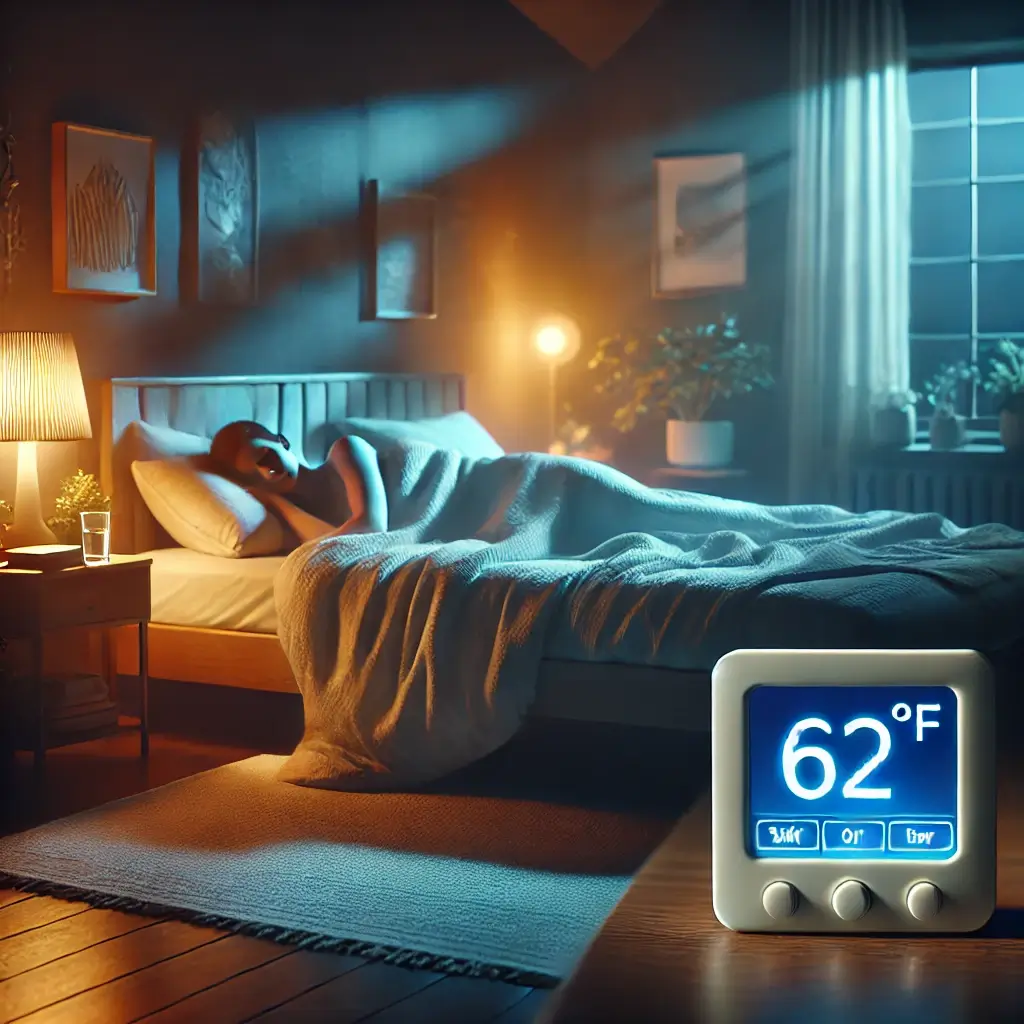Understanding Sleep’s Foundation
Sleep is a cornerstone of health, yet its complexities often remain underappreciated. While much attention is given to habits like reducing screen time or establishing bedtime routines, the physical environment—particularly room temperature—plays a pivotal role in sleep quality. Beyond mere comfort, temperature affects our biological systems, dictating how deeply and restoratively we sleep.
The Science of Circadian Rhythm
Central to sleep regulation is the circadian rhythm, a natural 24-hour cycle that governs when we feel alert or drowsy. A crucial element of this rhythm is thermoregulation. As evening approaches, the body initiates a slight decline in core temperature, signaling readiness for sleep. This physiological drop is complemented by a cool ambient environment, creating ideal conditions for the transition into slow-wave sleep, or deep sleep.
Deep Sleep’s Essential Role
Deep sleep is essential for physical restoration, hormone balance, and immune system strengthening. However, an unsuitable room temperature can disrupt this process, leading to fragmented sleep and reduced recovery. In this article, we’ll explore groundbreaking research on the connection between room temperature and sleep quality, while offering actionable insights to optimize your sleep environment.
Temperature’s Role in Sleep Quality
Over the years, studies have delved into the intricate relationship between environmental conditions and sleep quality. The consensus is clear: temperature matters, and cooler conditions often yield better sleep outcomes.
Research Findings on Temperature and Sleep
Young Adults and Optimal Temperatures (2019): A study published in Nature and Science of Sleep revealed that young adults experienced the highest quality of sleep in environments ranging from 60°F to 67°F (15.6°C to 19.4°C) (Caputa et al., 2019). Participants sleeping in warmer rooms reported difficulty falling asleep, frequent awakenings, and less time spent in deep sleep. The research emphasized the importance of maintaining a sleep-friendly temperature to align with the body’s thermoregulatory needs.
Temperature Effects on Older Adults
Older adults, often more sensitive to environmental factors, were the focus of a study published in PLOS One. This research demonstrated that both excessively warm and cold conditions disrupted sleep cycles. Participants reported the best sleep quality within a narrower temperature range of 60°F to 65°F (15.6°C to 18.3°C) (van Marken Lichtenbelt et al., 2017). These findings suggest that as individuals age, thermal comfort becomes even more critical to ensure restorative sleep.
Chronic Sleep Disorders and Environment
A meta-analysis by the Journal of Sleep Research examined the link between poor sleep environments and chronic conditions such as insomnia. The analysis confirmed that suboptimal temperatures exacerbate sleep disorders, as elevated body temperatures hinder melatonin production and slow-wave sleep onset. Recommendations from this study included maintaining cooler room temperatures alongside other sleep hygiene practices.
Creating an Optimal Sleep Environment
Implementing the findings of these studies involves creating a bedroom environment conducive to deep sleep. Here are some actionable steps:
Sleep Environment Optimization Tips
Temperature Control: Use programmable thermostats to maintain a consistent bedroom temperature between 60°F and 67°F. If precise control isn’t feasible, fans or cooling bedding materials can provide relief.
Bedding Materials: Choose breathable, moisture-wicking fabrics to prevent overheating. Cotton or bamboo sheets are excellent choices for maintaining a cool sleep surface.
Air Circulation: Ensure proper ventilation in the bedroom. Stagnant air can increase room temperature, undermining sleep quality.
Nightwear Choices: Opt for lightweight, loose-fitting pajamas made of natural fibers to complement the cooling effect of a regulated room temperature.
Scientific Approach to Better Sleep
The science of sleep underscores the importance of environmental factors, with room temperature emerging as a critical element. Studies consistently identify 60°F to 67°F (15.6°C to 19.4°C) as the optimal range for promoting deep, restorative sleep. By aligning your sleep environment with these findings, you can significantly enhance your ability to fall asleep quickly, stay asleep longer, and reap the full benefits of slow-wave sleep.
Long-term Benefits of Sleep Environment Optimization
Incorporating these strategies not only improves sleep but also supports overall health and well-being. By making small adjustments to your bedroom environment, you’re investing in a vital aspect of your life—restorative, rejuvenating sleep.
Research Sources
References
Caputa, M., Fabian, K., Caruso, L., & Wahlström, V. (2019). Bedroom temperature and sleep quality in young adults: A laboratory study. Nature and Science of Sleep, 11, 825-833. Available from NIH.gov.
van Marken Lichtenbelt, W. D., Westra, H. A., & Lammers, G.-J. (2017). Circadian rhythm disturbances and bedroom temperature effects on sleep quality. PLOS One, 12(12), e0187313. Available from PLOS.org.
Journal of Sleep Research. (2020). Sleep environment and chronic insomnia: A meta-analysis. Journal of Sleep Research, 29(3), 1-15.
